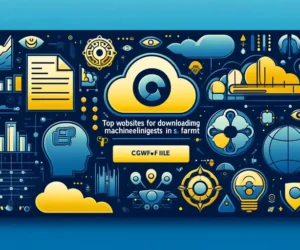
The Evolution of Emotion Recognition Technologies Over the Decades

Introduction
Emotion recognition technologies, once a concept primarily confined to the realms of psychology and science fiction, have significantly evolved over the past decades. As society's understanding of human emotions has deepened, so too has the technological prowess needed to decode these emotional signals. From simple observational studies in the early days to the intricate algorithms and AI models we see today, the journey of emotion recognition technologies reflects broader societal changes, particularly in how we communicate and interact with machines.
This article delves into the history and advancements in emotion recognition technologies, exploring their origins, major developments, technologies, and applications. We will discuss the implications of these technologies on various sectors, how they affect our personal lives, and the ethical considerations that arise as we integrate these systems into our daily routines.
The Early Days of Emotion Recognition
The formal study of emotions can be traced back to Charles Darwin, who, in the 19th century, suggested that emotional expressions have evolved and serve social functions. Although his work did not benefit from modern technology, it laid the groundwork for understanding how behaviors related to emotions could be studied scientifically. Through observational studies, scientists identified a range of universal emotions—happiness, sadness, fear, anger, surprise, and disgust—that exhibited similar facial expressions across different cultures.
As the 20th century approached, researchers began to employ more systematic methods to study emotional expressions. The emergence of facial coding systems, such as Paul Ekman's FACS (Facial Action Coding System) in the 1970s, transformed emotion recognition research. Ekman's FACS categorized facial movements and expressions, allowing researchers and practitioners to conduct more precise analysis based on visible emotional cues. Yet, it was still largely dependent on human interpretation, lacking the speed and scalability that technology would later offer.
Leveraging Emotion Recognition for Improving Employee ProductivityDespite these advancements, the field remained somewhat stagnant due to limitations in both technology and data collection methods. The early attempts to automate emotion recognition primarily relied on basic computer vision techniques, but these systems struggled to accurately interpret the nuances of human expressions. Additionally, the lack of diverse training datasets made it challenging to generalize findings across different demographics.
The Rise of Machine Learning and AI
The turning point for emotion recognition technologies came in the late 20th century with the advent of machine learning (ML) and artificial intelligence (AI). By the early 2000s, the availability of more extensive datasets and more powerful computing resources allowed researchers to explore various algorithms for facial recognition and emotion detection. The introduction of neural networks, particularly deep learning, revolutionized the landscape, enabling systems to learn from data patterns rather than relying solely on pre-established rules.
In particular, convolutional neural networks (CNNs) played a critical role in the automating emotion recognition process. For instance, when trained on vast datasets of labeled facial expressions, CNNs could learn to differentiate between subtle variations in emotions much more effectively than their predecessors. This technology significantly improved the accuracy and efficiency of emotion recognition systems, paving the way for applications such as virtual assistants, customer service bots, and more.
Moreover, the integration of emotion recognition technology into smartphones and various devices gained traction. For example, companies like Apple and Google began experimenting with their systems to gauge user sentiment and provide tailored responses, leading to a more interactive and responsive user experience. Sentiment analysis in text and speech further expanded the horizons of emotion recognition, allowing computers to process and understand emotional content expressed not only through facial expressions but also through words and voice tonalities.
Understanding the Underlying Psychology of Emotion Recognition AICurrent Innovations and Applications

Today, the applications of emotion recognition technologies are vast and varied, pervading several sectors, including healthcare, education, marketing, and human-computer interactions. In clinical settings, emotion recognition tools have become integral in therapeutic practices. For instance, wearable devices can analyze heart rate and skin conductance to monitor emotional states, providing therapists with valuable insights into patients' mental health. This objective data complements traditional therapeutic methods, ensuring personalized interventions.
In education, emotion recognition technology is invaluable. Teachers can use facial recognition systems to gauge student engagement and emotional states in real-time. This feedback allows for immediate interventions when students appear confused or disengaged. By fostering a more responsive classroom, educators can enhance student learning outcomes and emotional well-being, proving that technology can profoundly impact educational approaches.
Meanwhile, the marketing sector has also adopted emotion recognition with enthusiasm. Brands are employing emotion recognition software to analyze consumer responses to advertisements, gauging their emotional reactions through facial expressions and biometric data. This analysis helps marketers craft campaigns that resonate more profoundly with their target audience, resulting in improved engagement and conversion rates. For instance, a brand could identify which specific elements of an advertisement elicited excitement or happiness, allowing them to refine their content more effectively.
How to Evaluate and Fine-Tune Your Emotion Recognition AlgorithmsEthical Considerations and Future Directions
Despite the impressive advancements in emotion recognition technology, ethical considerations remain paramount. Concerns around privacy, consent, and misuse of emotion recognition systems are significant. For instance, the ability to analyze a person's emotional state without their explicit consent raises questions about surveillance and autonomy. The potential for misinterpretation and bias in emotion detection algorithms is another pressing issue, particularly when it comes to racial and cultural differences in emotional expression.
As we move forward, it is crucial that developers and researchers establish robust ethical guidelines and regulatory standards governing the use of emotion recognition technologies. Transparency in how these systems operate, along with accountability for their implications, is essential for fostering public trust and ensuring these technological advancements are used for the greater good. Initiatives in human-centered design can help create systems that prioritize user welfare and autonomy while still harnessing the benefits of emotion recognition technologies.
The future of emotion recognition technologies is promising but requires careful navigation concerning ethical frameworks. As algorithms continue to evolve, the potential for more personalized and empathetic digital interactions grows. Companies that prioritize ethical considerations alongside technological advancement will be key players in shaping the future landscape of human-computer interactions.
Conclusion
The journey of emotion recognition technologies from early observational studies to the sophisticated systems we see today demonstrates the power of innovation and the importance of understanding human emotion. Rather than merely interpreting expressions, these technologies have evolved to embrace the complexities of emotional communication, powering applications in healthcare, education, marketing, and human-computer interaction, among others.
Utilizing Transfer Learning for Emotion Recognition in AI ModelsHowever, with the remarkable advancements come equally pressing challenges. The ethical implications must be addressed, prioritizing respect for privacy and cultural contexts while creating transparent and accountable systems. Attention to these considerations will determine the trajectory of emotion recognition technologies, ensuring they foster connection, empathy, and understanding in our increasingly digital world.
As we look to the future, it is essential to continue fostering collaboration between technology developers, ethicists, and social scientists. By uniting different fields, we ensure that emotion recognition technologies remain beneficial and inclusive as they continue to evolve, enhancing our interactions with machines and each other for years to come. The emphasis must be on creating a future where technology serves humanity—understanding our emotions and making the world a more empathetic place.
If you want to read more articles similar to The Evolution of Emotion Recognition Technologies Over the Decades, you can visit the Emotion Recognition category.



You Must Read